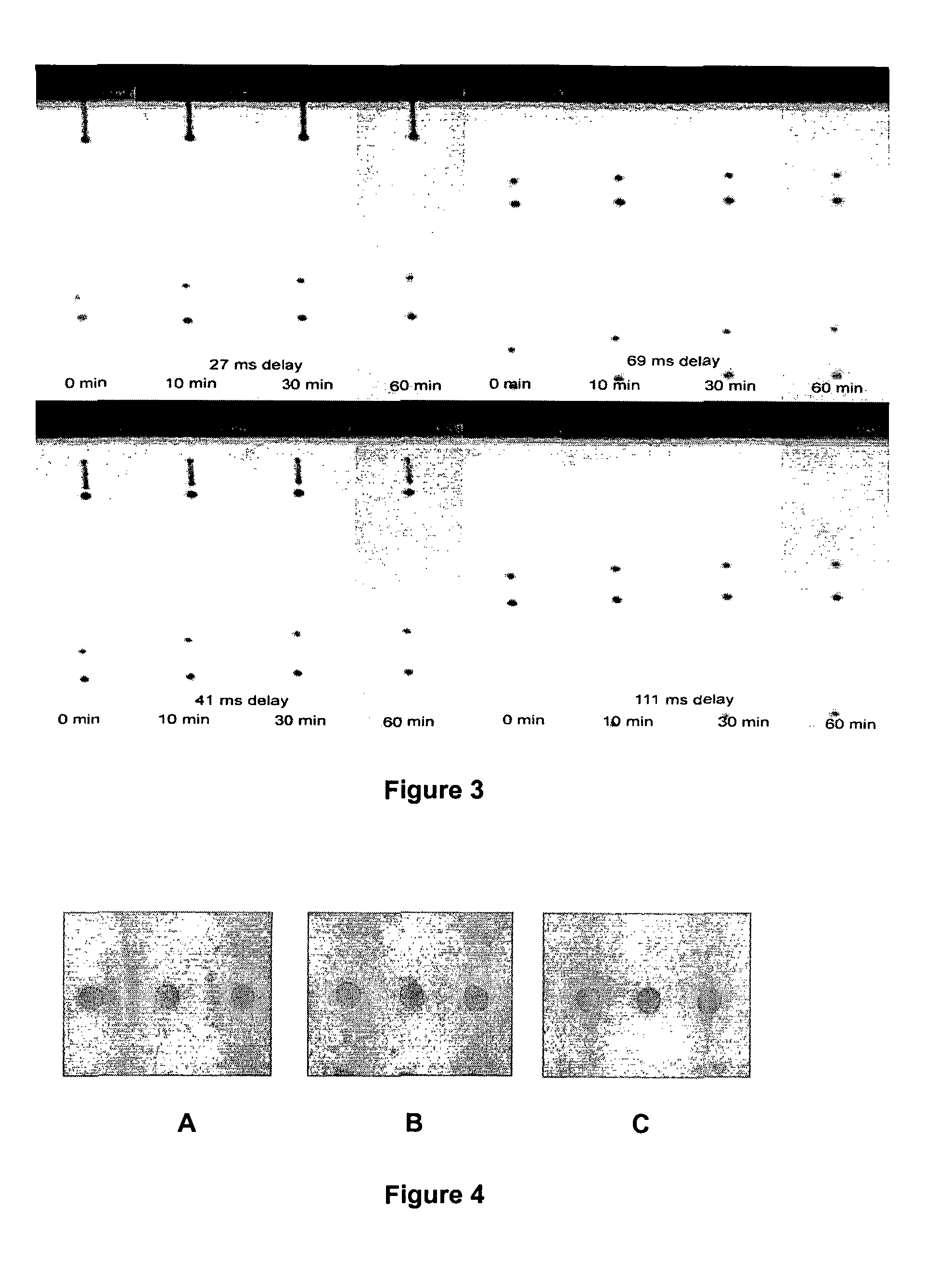Formulation For Ink-Jet Printing Comprising Semiconducting Polymers
a semi-conducting polymer and inkjet printing technology, applied in the direction of non-metal conductors, sustainable manufacturing/processing, final product manufacturing, etc., can solve the problems of reducing device performance, polymers, like for example the commonly used pat, generally have solubility problems, and lowering electrical performan
- Summary
- Abstract
- Description
- Claims
- Application Information
AI Technical Summary
Benefits of technology
Problems solved by technology
Method used
Image
Examples
example 1
[0096] Formulations were prepared from poly(3-hexyl)thiophene (PHT) with a molecular weight of 10,000 and a regioregularity of 96% in different solvents as shown in the table below, and the solubility and gelling behaviour of the polymer were tested.
SurfaceBoilingTensionSolventPoint (° C.)(dynes / cm)Properties of polymerTetralin20734Soluble, heat requiredIndane17635to rapidly dissolve,small amount of gellingover a few days1,2,5-Trichloro-20827Soluble, little gellingbenzeneover time, but remainsa red / brown colourDiethylbenzene18130.5Poor solubility, heatXylene14027.5required and showedvery bad gelling overfew hoursAnisole15432.5Very bad solubilityMethylanisole17431Very bad solubility
[0097] Although anisole and methylanisole have reasonably high boiling points and surface tensions that are higher than the equivalent non-oxygenated aromatic, they showed only a very poor solubilization for the polymer which is insufficient for ink-jet use.
[0098] Xylene and diethylbenzene provided sati...
example 2
[0101] Formulations were prepared from the PHT of example 1 in tetralin and indane at different concentrations as shown in the table below. For comparison a formulation of the PHT in a solvent mixture tetralin / toluene (50 / 50) was prepared.
Formulation No.SolventPHT (wt. %)viscosity (mPa · s)1atetralin1.0%2.531btetralin2.0%3.621cindane1.0%1.722toluene / tetralin1.0%1.28
example 3
Use Example
[0102] The formulations 1a-c and 2 were tested for use as printing inks.
[0103] A) To test the priming performance the inks were loaded into a Spectra SX-128 ink-jet printhead (available from Spectra Inc., NH, USA). The head reservoir was half filled with ink (about 10 ml); ink was primed through the nozzles using a single purge at a pressure of 5.5 PSI for 5 seconds (a standard purge on the Spectra Apollo system).
[0104] B) To investigate jetting properties and droplet formation under different driving conditions, the formulations were loaded into the
[0105] Spectra SX Special print head and then jetted using a variety of firing voltages, frequencies and waveforms.
[0106] C) To investigate the dwell performance of the inks the head was first primed and drops were jetted—images of these were recorded. The head was then left for a set length of time, either 5 or 30 minutes without firing. After this time the head was fired and images immediately recorded at different dela...
PUM
| Property | Measurement | Unit |
|---|---|---|
| boiling temperature | aaaaa | aaaaa |
| surface tension | aaaaa | aaaaa |
| viscosity | aaaaa | aaaaa |
Abstract
Description
Claims
Application Information
 Login to View More
Login to View More - R&D
- Intellectual Property
- Life Sciences
- Materials
- Tech Scout
- Unparalleled Data Quality
- Higher Quality Content
- 60% Fewer Hallucinations
Browse by: Latest US Patents, China's latest patents, Technical Efficacy Thesaurus, Application Domain, Technology Topic, Popular Technical Reports.
© 2025 PatSnap. All rights reserved.Legal|Privacy policy|Modern Slavery Act Transparency Statement|Sitemap|About US| Contact US: help@patsnap.com



